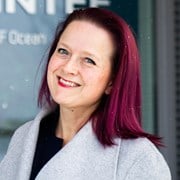The initiative is based on the complex relationship between technology and nature, and the topic is expected to receive a lot of attention both in Norway and the EU in the coming future.
"That SINTEF as an organization has chosen to work strategically with this important topic is an essential and natural next step in the fight against climate change and the fight to preserve our planet", says Nils Røkke, director of sustainability at SINTEF. "We are convinced that SINTEF has a lot to contribute to the intersection of technology and nature, and want to mobilise for new challenges as we head towards 2030 and 2050".
The new group initiative is rooted in a pilot project that resulted in the recommendation to establish a new investment in biodiversity. The pilot project's final memorandum refers to a report originating from a biodiversity and climate workshop organized by IPBES and the IPCC in December 2020, which states:
"According to the report, a sustainable future for humans and nature is still possible, but it will require measures of an extent that has never been implemented before, especially in terms of land use and reduction of greenhouse gas emissions. At the same time, it is not a given that measures that serve one goal also serve the other. The expert group points out that measures to reduce greenhouse gas emissions can harm the environment, and vice versa. Thus, it is important to develop measures that serve both purposes".
A vision for the future
Sustainable management is central to SINTEF's work, and with "Technology for a better society" as its vision, we are always concerned with creating comprehensive solutions for a green future. The UN's sustainability goals are the driving force behind the group strategy from 2019, and the areas of climate, life on land and life under water are particularly important. In order for these topics to be followed up in the best possible way, work must be done across departments and together with other actors. Therefore, this group initiative for biodiversity will encourage collaboration with other institutes and institutions with large investments in sustainability, ensuring that all knowledge gaps can be filled and that the research we need can be completed.
Chief researcher Rachel Tiller at SINTEF Ocean has been appointed to lead the new group initiative. Tiller has a strong background in biodiversity from a political science perspective with a focus on international relations, and undoubtedly believes that time is critical for putting the spotlight on this very important topic.
"We don't know how much nature or how many species we are about to lose, because we do not even know how many species actually exist. We have identified just under two million species but estimates of how many actually exist are anywhere from 5-50 million species", says Tiller. "All we know is that we are losing important parts of our planet's biodiversity, and we are losing them quickly, and nothing will change if we don't act immediately. This is why it is absolutely necessary with sustainable development and growth in the industry – growth that takes biodiversity seriously and develops technologies and solutions that do no harm".
In line with future requirements
Tiller predicts that soon, guidelines on biodiversity will be a requirement in all new projects on equal footing with, for example, ethical guidelines, interdisciplinarity and requirements for gender balance.
"This will be a new type of life cycle analysis (LCA) - to look at how technology and development affects biodiversity. So here it's about how we at SINTEF can in the best way possible use the resources we work with to achieve growth and development, and at the same time preserve the biodiversity in the ecosystem", Tiller says. "It's our duty to do this - to work towards achieving not only the climate goals and the sustainability goals, but also our commitments to biodiversity. It's not easy, but in reality, we have no choice. We must do this both to remain a leader in research development, and not least to save our planet".


